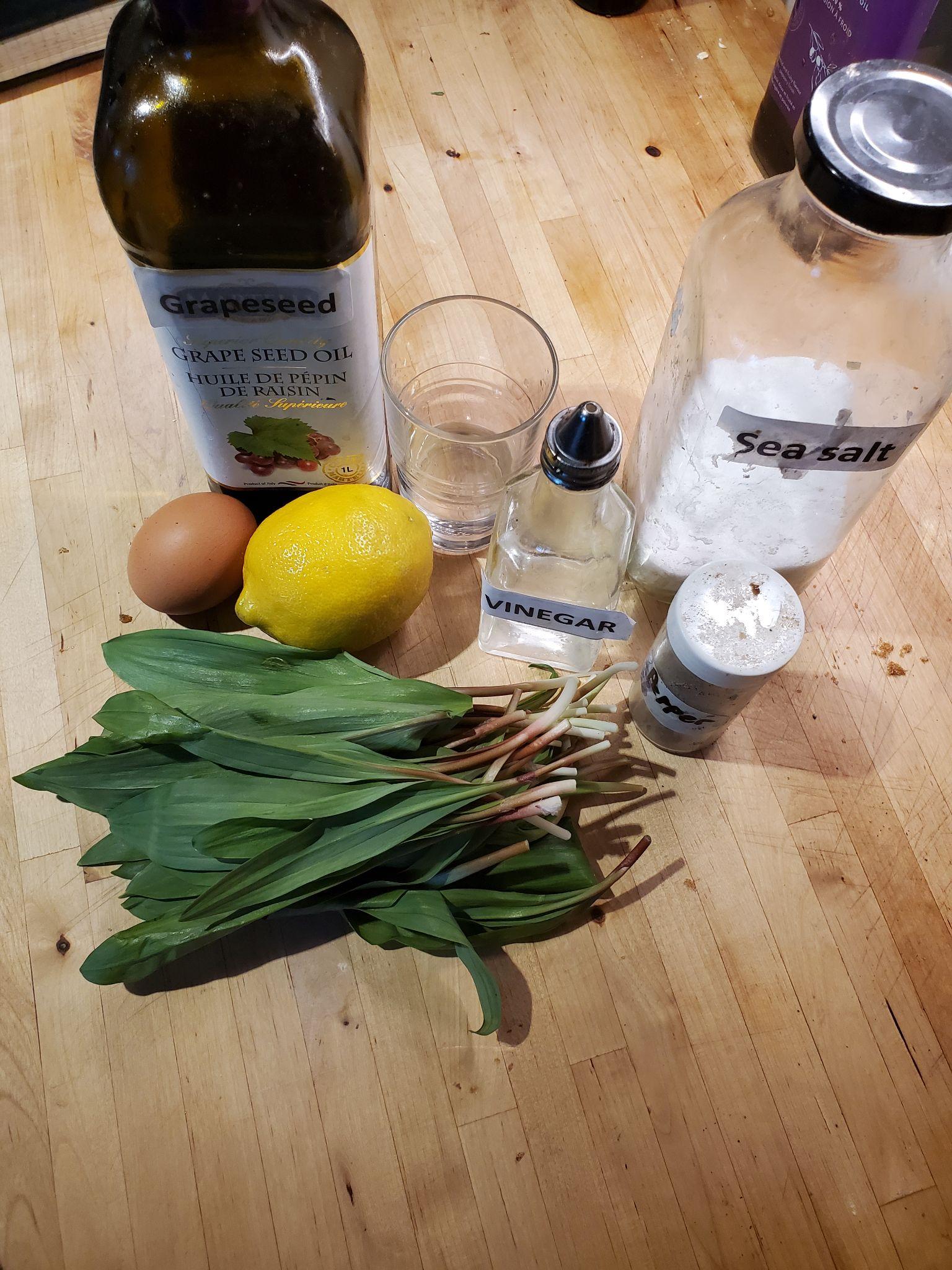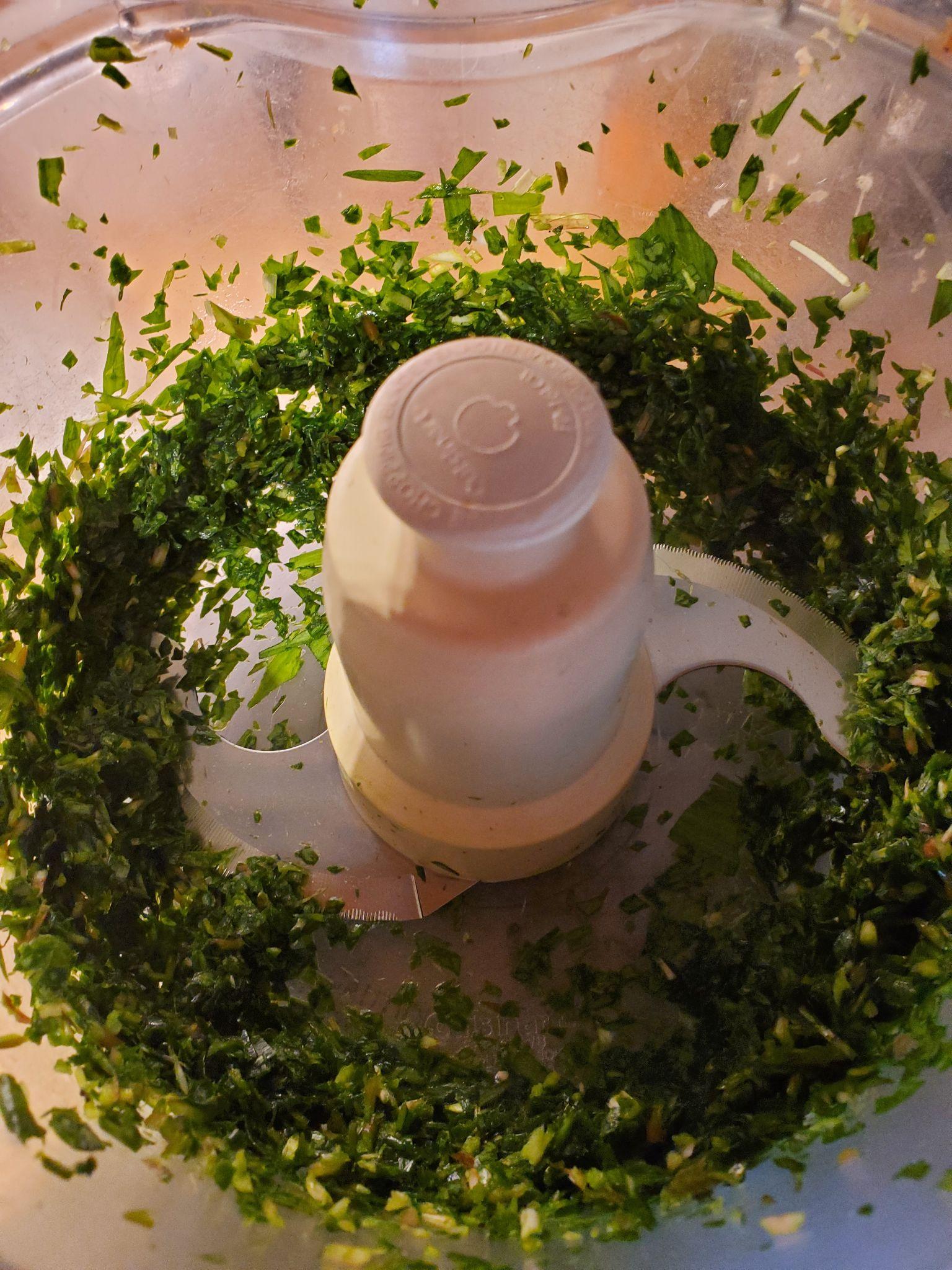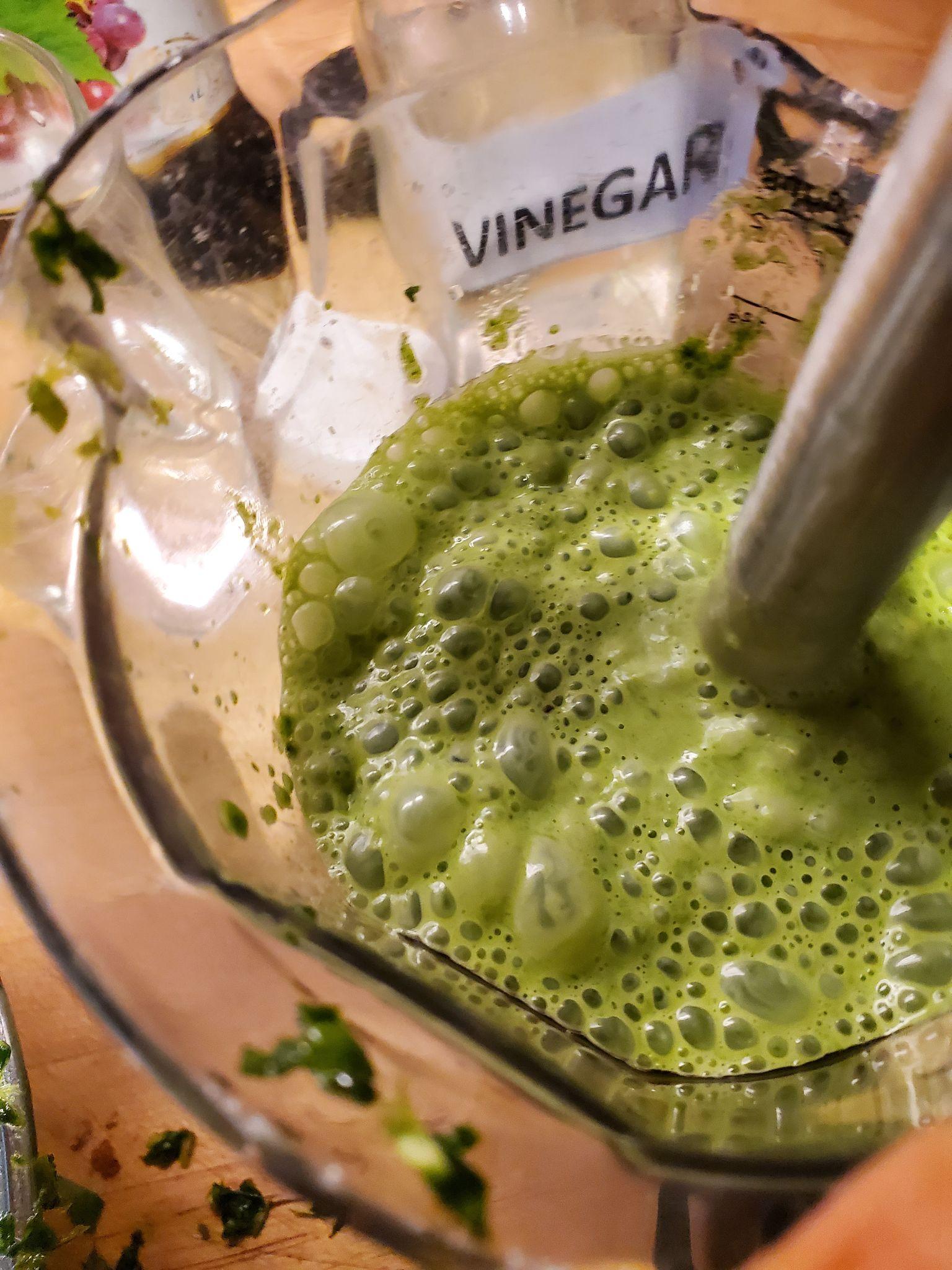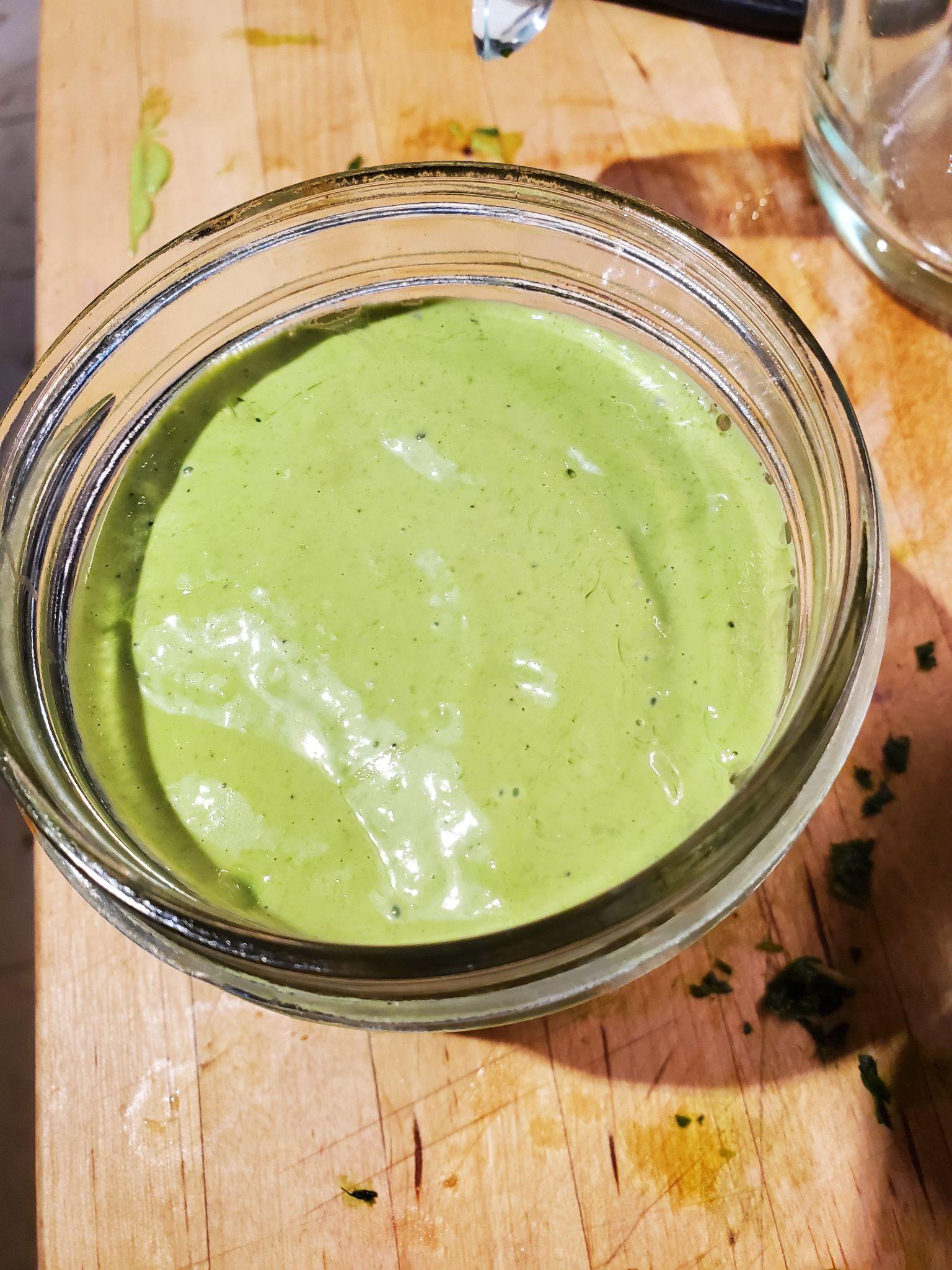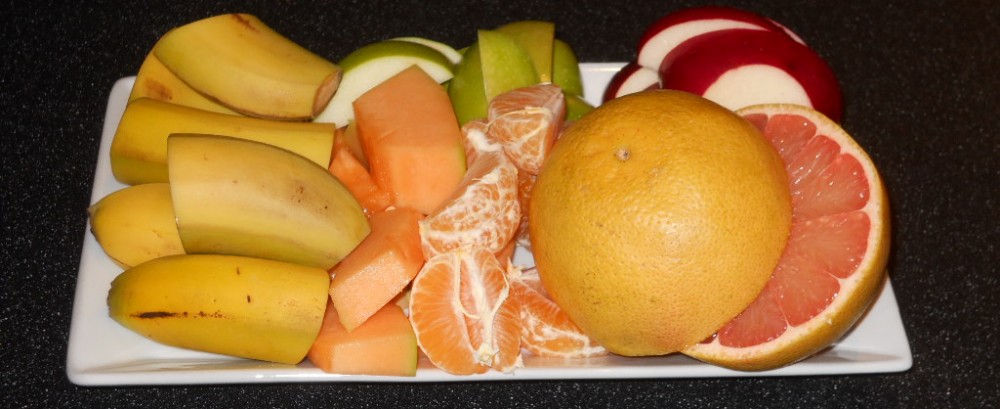This week I’ve been doing a lot of wandering through the woods. There’s a pretty big woodlot right beside us – some of it privately owned and (once every 25 years) logged, some of it belonging to the local conservation authority. Rarely is there anyone in it. A couple of us follow trails started this past winter by cross country skiing,
Walking through the woods is both a mindful and a mindless activity. You can let your mind go, taking a deep spontaneous and random dive into your thoughts (while keeping an eye out for exposed roots and other trail hazards). I understand this is a wonderfully creative place to be.
A week ago (mid April), I sighted the very first wild onions of the year. A sure sign of spring.
I was so excited! I didn’t think they’d be up quite this early but here they are so I started gathering them. Today I’m only gathering leaves. Not many, just what I immediately need. Pulling the roots as well would be a lot more invasive. You have to use a tool and dig under the the roots. Although they can propagate through both seeds and runners, they reproduce best by the root bulb splitting in half. Also by just taking the leaves, its a lot cleaner.
This year I’m continuing to do what is becoming a tradition for me: putting wild onions in everything I cook. I wrote about this last year.
So what will I use them for tonight? We’re having steak tonight so … as a garnish on the steak? Potato salad?
Possibly as an onion accompaniment to mushroom sauce? But I have a feeling if I did that that they would lack their unique taste. Definitely a garnish in the salad.
A couple of years ago I made wild onion wine jelly which is a variation on garlic wine jelly. That’ll go on the table. Like everything made with wild onions/leeks/garlic, it has its own very unique taste.
Recently I’ve been working with aioli – something I have not done much until recently. I thought, “whoa how about using the wild onions to make a wild onion aioli?” It would essentially substitute for the garlic. I was wondering about if there were a natural citrus kind of flavor and acid to substitute for lemon & keeping it all local. I think the first time I’ll just stick with lemon, grapeseed oil, wild onion, pepper, salt and of course an egg. I’ll forgo the oregano and thyme in order to focus on the true wild onion flavor.
My first attempt was as follows, and I’m happy with the result. Initially the taste was too strong, but after a while, it settled down and became pretty amazing.
Ingredients
75 g wild onion leaves. This is an approximate measure. Take your cue from the picture below.
¼ tsp pepper
1 tsp vinegar
1 tsp lemon juice
1 tsp water
½ tsp salt
1 egg
250g grapeseed oil
Method
Equipment needed:
- Bowls
- Immersion blender
- its mixing container (or a wide mouth 1L mason jar). Its important to use a container like this (i.e. barely wide enough for the immersion blender to fit into) in order to make the emulsification work.
- Weigh scale. The weight of the oil is important for a successful emulsification.
- Measuring spoons
Instructions
- Go pick your wild onions. You will need to fill a sandwich bag to get enough for a one egg aioli. Its best to harvest and prepare on the same day, though a day or 2 later is fine too.
- Weigh and puree wild onion leaves
- Measure the pepper, vinegar, lemon juice, water, salt and egg in the immersion blender container, and thoroughly blend.
- Add the wild onion puree and blend until fully combined
- Slowly add the grapeseed oil until it begins to thicken, and the sauce is smooth. It may not thicken in the way you may be used to with garlic, but it will get thicker once chilled.
This should make enough to fill a 500ml jar.
Enjoy in all the ways you would use with aioli or mayonnaise: as a dip, a spread, a sauce…..Let your imagination go.
A late June postscript:
The Aioli is definitely the way to go with wild onions. Its easy to make, incredibly versatile, and refrigerated lasts a very long time just like mayo and other aiolis. This is the in between season where garlic is concerned: by April last fall’s bulbs are finished or sprouting, and only now is the first of this year’s crop coming to local farmer’s markets. Garlic scapes are making their presence known, and that will be the next aioli I make. I’m planning on the same recipe, just sub in scapes for the ramps. Although I can’t wait to get new garlic, I see using wild onions and scapes as a wonderful part of the yearly culinary cycle.
